Amending the Constitution
 The Indian Constitution may be the supreme binding document of the country, but it cannot always be rigid and permanent. The Constituent Assembly, recognizing the need for flexibility, devised a mechanism to amend the Constitution. Amendments are changes or alterations made to pieces of legislation in order to improve their functioning.
The Indian Constitution may be the supreme binding document of the country, but it cannot always be rigid and permanent. The Constituent Assembly, recognizing the need for flexibility, devised a mechanism to amend the Constitution. Amendments are changes or alterations made to pieces of legislation in order to improve their functioning.
In the initial stages of writing the Constitution, it was argued that the amendment-making process should be simple enough to execute without causing undue administrative burden, while also containing procedural safeguards to prevent the misuse or overuse of amending power.
Procedure
In the original Constitution, it was provided that certain Articles could be amended through a simple majority, meaning that 50% of the present and voting members of Parliament had to approve of the amendment. This procedure was applicable for the admission of new states, alteration of the boundaries of states, formation of union territories, and more. However, the process of amending through simple majority is no longer in practice.[1]
At present, the formal procedure to amend the Constitution of India is provided under Article 368. In order to amend the Constitution, a Bill proposing the amendment must be introduced in either House of Parliament. The Bill must be passed in both the Houses by special and absolute majority. A special majority is two-thirds of the members present and voting and an absolute majority is 50% of the total membership of the Houses, including any vacancies or absences. If there is a disagreement between both the Houses, the proposed Bill is immediately dropped. After being passed in the Houses, the Bill goes to the President for his assent and subsequently becomes an amendment. Any alteration of the Constitution, whether major or minor, must follow this process.
If a proposed amendment affects matters which are of common interest to both the Centre and States, such as federal structure, the election of the President, or the distribution of powers between the Union and States, then the amendment must also be ratified by half of the State Legislatures. Any amendment seeking to modify Article 368 must also follow this procedure. Article 368 has been amended twice, in 1971 (24th Amendment) and in 1976 (42nd Amendment).
Limitations to Constitutional Amendments
There is no limit to the number of amendments that can be made in a year. Previously, Parliament had unlimited power to amend the Constitution. In 1951, the Supreme Court observed that there was no provision in the Constitution that could not be amended and that no amendment to the Constitution could be called into question by the Court[2]. The Supreme Court changed its mind in 1967, when the first constitutional amendment was struck down[3]. The Court held that the fundamental rights included in Part III of the Constitution were beyond the reach of Parliament. The Court declared any amendment that takes away or abridges a fundamental right unconstitutional. In addition, the Supreme Court held that all proposed amendments must respect the basic structure of the Constitution to be considered valid.[4] This ruling serves to protect fundamental features of the Constitution from alteration.
Important Amendments to the Indian Constitution
The Indian Constitution is one of the most frequently amended documents in the world and the most amended national constitution. It has been amended 103 times since its inception, with the latest amendment coming into force on 12 January 2019.
Some important constitutional amendments are:
- The 42nd Amendment, 1976:
This is the most comprehensive amendment to the Constitution so far and is known as the mini-constitution. It was passed during the 1975-77 emergency and contained 59 clauses. It curtailed fundamental rights, imposed fundamental duties and added the words ‘socialist’ and ‘secular’ to the existing preamble. The provisions of Article 368 were also amended to make Parliament’s power to amend the Constitution unlimited and unquestionable[5].
The 42nd amendment is considered to be one of the most controversial amendments and large portions of it have been struck down by the Supreme Court as unconstitutional[6]. - Right to Property:
The right to property was once a fundamental right of citizens. The 44th Amendment, 1978 abolished it in order to promote land acquisition and developmental projects. It is now a constitutional right under Article 300A. - Voting Age:
The 61st Amendment, 1989 reduced the age of voting in the Lok Sabha and Legislative assembly elections from 21 years to 18 years. - Free and Compulsory Education:
The 86th Amendment Act, 2002 inserted article 21A into the constitution, making free and compulsory education a fundamental right for children from 6 years to 14 years of age. - Goods and Services Tax (GST):
The 101st Amendment Act, 2016 introduced a nationalized Goods and Services Tax (GST). GST is an indirect tax levied on the supply of goods and services. It has replaced all other taxes and acts as a single comprehensive tax for the whole country[7].
[1] Pandit Jawaharlal Nehru, Constituent Assembly Debate, https://web.archive.org/web/20131203013055/http:/164.100.47.134/intranet/CAI/1.pdf
[2] Shankari Prasad vs. Union of India, AIR 1951 SC 455
[3] IC Golaknath and Ors. vs. State of Punjab, AIR 1967 SC 1643
[4] Kesavananda Bharati vs. State of Kerala, AIR 1973 SC 1461
[5] 42nd Amendment, was it India’s or Indira’s Constitution, Gyan Prakash Kesharwani, https://ccrd.vidhiaagaz.com/42nd-amendment-of-indian-constitution/
[6] Minerva Mills vs. Union of India, AIR 1980 SC 1789
[7] The Constitution (One Hundred and First Amendment) Act, 2016: A Review, Sakshi Raje, https://lawtimesjournal.in/the-constitution-one-hundred-and-first-amendment-act-2016-a-review/#_ftn2
